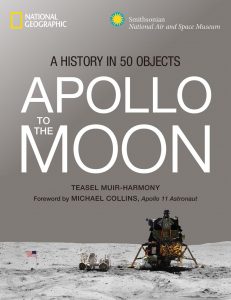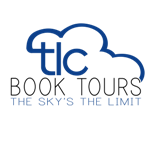A celebration of the 50th anniversary of NASA's Apollo missions to the moon, this narrative uses 50 key artifacts from the Smithsonian archives to tell the story of the groundbreaking space exploration program.
Bold photographs, fascinating graphics, and engaging stories commemorate the 20th century's most important space endeavor: NASA's Apollo program to reach the moon. From the lunar rover and an emergency oxygen mask to space food and moon rocks, it's a carefully curated array of objects--complete with intriguing back stories and profiles of key participants.
This book showcases the historic space exploration program that landed humans on the moon, advanced the world's capabilities for space travel, and revolutionized our sense of humanity's place in the universe. Each historic accomplishment is symbolized by a different object, from a Russian stamp honoring Yuri Gagarin and plastic astronaut action figures to the Apollo 11 command module, piloted by Michael Collins as Armstrong and Aldrin made the first moonwalk, together with the monumental art inspired by these moon missions. Throughout, Apollo to the Moon also tells the story of people who made the journey possible: the heroic astronauts as well as their supporters, including President John F. Kennedy, newsman Walter Cronkite, and NASA scientists such as Margaret Hamilton.
Hardcover, 304 pages
Published October 30th 2018 by National Geographic Society
My Thoughts
Fondly I recall wandering the halls of the National Air and Space Museum when I was director there in the 1970s and eavesdropping on visiting families.As we approach the 50th anniversary of the lunar landing, National Geographic gives us an illustrative book about this landmark event, filled with photographs and information about America's journey to the moon.
This book opens with a foreword from Michael Collins, a Gemini 10 and Apollo 11 pilot and the director of the Smithsonian National Air and Space Museum from 1971 to 1978. He is the photographer who took one of the most iconic images of space exploration, showing the Apollo 11 lunar module above the moon's surface with Earth in the background; a photo which Collins named "Three Billion Plus Two". Collins provides a good introduction to this book, effectively summarizing the space program and some of the key individuals involved in space travel. He acts as a reliable narrator of the early days of space travel.
This book is divided into nine sections: The Early Days, New Challenges, The Assembly, Liftoff!, In Flight Moonwalking, Lunar Science, Overcoming Catastrophe, and Return to Earth. Each section begins with an introduction and is filled with artifacts pertinent to that stage of the space program. Quite appropriately the first artifact following Collins's foreword is a plaque containing fabric and a piece of wood from the plane of the Wright Brothers that took flight in 1903, the fragments of which Neil Armstrong took with him into space aboard the lunar module Eagle in July 1969, on that famous flight that put man on the moon.
Some of the artifacts in the book are a given, things like the Vanguard TV-3 Satellite, the first satellite launch that failed spectacularly in 1957 following the equally successful launch by Russia of their first satellite Sputnik. Or the Freedom 7 Mercury Capsule, which launched the first American into space on May 5, 1961.
Some items are more intimate and personal, like the Ansco camera that John Glenn bought at a drug store and used to catch photos from space in 1962, or the "Urine Collection and Transfer Assembly" that was used by astronauts on the Apollo 11 flight for...well, urine collection during space travel. And the museum collection includes the more mundane, like small plastic toy astronauts and lunar roving vehicles from the '70s.
At the end of the book you will find a detailed Apollo timeline, as well as further reading suggestions.
I would like to thank TLC Book Tours for including me on this tour. Check out the website for the full tour schedule:
Tuesday, November 6th: Lit and Life
Wednesday, November 7th: Tina Says…
Thursday, November 8th: Instagram: @giuliland
Monday, November 12th: Reading Reality
Wednesday, November 14th: From the TBR Pile
Thursday, November 15th: BookExpression
Monday, November 19th: Instagram: @reading.wanderwoman
Tuesday, November 20th: Diary of a Stay at Home Mom
Wednesday, November 21st: Cerebral Girl in a Redneck World
Thursday, November 22nd: I Wish I Lived in a Library
TBD: A Book a Week
My final word: This book is essential to anyone interested in the history of the space program. It's tough to do a book like this and not have it feel like a text book. This one walks that line. It's informative, but it also humanizes the artifacts and offers you a personal look inside space exploration. A wealth of knowledge and a little better understanding of why we did what we did and how America became the first to put a man on the moon, while acknowledging its failures and embarrassments along the way.
Buy Now:
National Geographic
Barnes and Noble
Amazon
IndieBound
My Rating:
The Cerebral Girl is a forty-something blogger just digging her way out from under a mountain of books in the deep south of Florida.
I received a copy of this book to review through TLC Book Tours and the publisher, in exchange for my honest opinion. I was not financially compensated in any way, and the opinions expressed are my own and based on my observations while reading this novel.






















3 comments:
Thanks for being on the tour!
Nice post.Keep sharing. Thanks
Awesome
quotes
haters quotes
juice wrld quotes
pain quotes naruto
single independent woman quotes
aesthetic short quotes
warren buffet quotes
sadhguru quotes
black and white quotes
Post a Comment